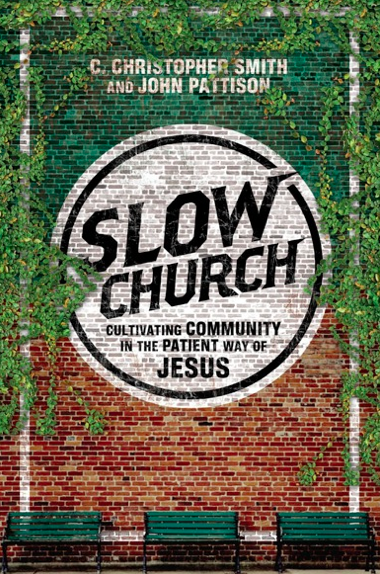I’m delighted to feature this guest post from my friend Chris Smith, who edits the indie review Englewood Review of Books, for which I’m a reviewer and regular columnist. He and John Pattison have co-authored a wonderful new book called Slow Church: Cultivating Community in the Patient Way of Jesus, which I’ll be reviewing elsewhere. Meanwhile, here is an exclusive excerpt from Slow Church, and one that appeals to me as a foodie and food writer…not to mention a Christian!
One of the keys to understanding Slow Church is captured in the seventeenth-century French phrase le gout de terroir, which can be translated “the taste of the place.” Carlo Petrini, the cofounder of Slow Food, writes often about terroir as “the combination of natural factors (soil, water, slope, height above sea level, vegetation, microclimate) and human ones (tradition and practice and cultivation) that gives a unique character to each small agricultural locality and the food grown, raised, made, and cooked there.” Thus, a Pinot noir from Oregon’s Willamette Valley takes on the taste and texture of the grape, the soil, the barrel and the late frost. In the same way, Slow Church is rooted in the natural, human and spiritual cultures of a particular place. It is a distinctively local expression of the global body of Christ.
“The Word became flesh and blood, and moved into the neighborhood” (Jn 1:14 The Message).
With a commitment to place, and with gratitude for the immensity of God’s gifts there, our churches become catalysts of human flourishing: nurturing local economies and local culture, and seeking the common good of our places. Slow Church is a journey in the direction of ethics, of preferring quality over quantity, of seeking the well-being of our congregation as well as our neighborhood. In his book Missional: Joining God in the Neighborhood, Alan Roxburgh writes that the way to know God is to
“[enter] into the ordinary,
everyday life of the neighborhoods and communities where we live.”
He says later:
“I’m appealing for the recovery of local and particular ways of calling forth the personal once more in the towns and neighborhoods where we live. For me, this is about dwelling among, working beside, and eating at the table of the men and women who live in our communities, who long for the personal rather than the pitch.”
We are bound one to another, but a culture built on speed wants to fling us out from the center like a centrifuge. Thus, to commit ourselves to cultivating goodness through practices of nearness and stability, and to conversationally develop shared traditions, is to take a stand against alienation. It is a way of crafting a new, shared story for the community, while connecting us to the cosmic church across time and prefiguring the kingdom of God. It is also an acknowledgment that our fates are wrapped up with the fates of our neighbors.
…
If McDonaldized church makes the case for increased efficiency, calculability, predictability and control, Slow Church makes “the case for taste”—specifically the case for “the taste of the place,” and for “taste and see that the Lord is good” (Ps 34:8). Taste is the most intimate of the five senses. Seeing allows us to experience something from a great distance. Think of the vast expanse of land, water and sky—technically called a viewshed—visible to the human eye from the top of a high hill. Though our sense of hearing is not as far reaching as our sense of sight, we are still able to hear a crack of thunder or bells in a church steeple. Our range of smell is even closer. Touch closes the gap completely. We know that human touch is vital to physical, emotional and spiritual wellbeing, but it is still only surface to surface. Taste goes deeper. As Brother David Steindle-Rast, a Benedictine monk, has written, “Tasting what dissolves on our tongue dissolves the barriers between subject and object. What we have tasted we know ‘inside out.’” Thus to come to know the taste of a place is to blur the line between ourselves and the other. It thwarts the forces of alienation. As I become part of my place it becomes part of me.
Psalm 34:8 is an invitation to experiment. To taste God is to know God’s goodness in the deepest way.






